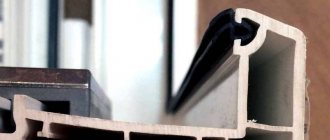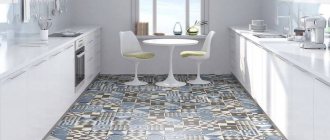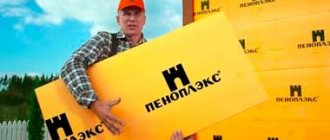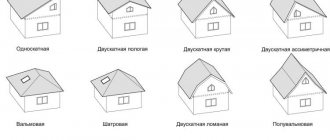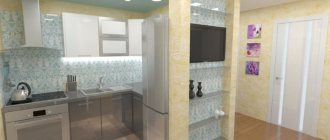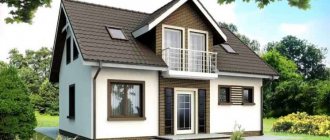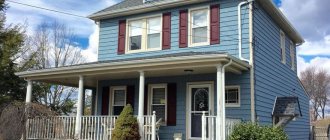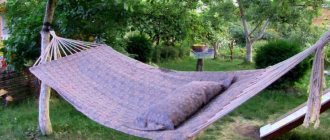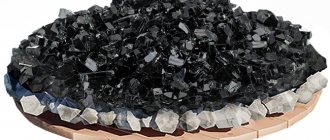The entrance hall is the first to greet guests. She is the face of the whole house, creating the mood and characterizing the owners. In addition to the fact that it should be cozy and beautiful, it is important to think about its practicality. When thinking about what the floor in the hallway will be like, you should take into account the features of this room and combine the aesthetic side with functionality. Nowadays, there are many types of flooring with different technical and visual characteristics. It won’t be difficult to choose one that suits your color, design and other requirements.
Option for flooring in the hallway.
Natural ceramic tiles
This type of material is rarely used in the hallway, especially if it is an apartment. The advantages of natural ceramics include durability, strength and the ability to choose exclusive finishes. But what deters buyers from choosing such tiles?
First of all, the price. The cheapest types of such stone will cost from $200 per square meter. Exclusive colors will cost $1,000. Therefore, this coating is used mainly in cottages and country houses.
Parquet board
The parquet board, consisting of several layers with locks and tenons, is easy to assemble and lasts a long time. However, the varnish coating is quickly erased due to abrasives, and it turns yellow when exposed to detergents.
If you like the design of a parquet board and want to lay it in the hallway, you can buy this finishing material, but it needs constant treatment using special impregnations.
Floor painting - painting technology for wooden and concrete floors (80 photos)- Marmoleum - installation basics and rules for laying natural linoleum (70 photos)
Cork flooring - features of coating application and installation rules (100 photos)
Artificial tiles
If the renovation budget is limited, but you have chosen tiles, you can make the hallway floor from artificial materials. One square meter costs about 15 dollars. Compared to natural ceramics, such ceramics are in great demand in the market. Among its advantages are high wear resistance and impact resistance. Also, such a floor in the hallway is not afraid of moisture.
This is a significant plus. After all, it is in the hallway that we leave our shoes, which will not be dry at all on rainy or snowy days. This floor is also not afraid of frequent wet cleaning. Reviews note that glossy tiles are the easiest to maintain. When it comes to choosing a style, ceramics that imitate natural wood and stone are often chosen. The variety of designs will allow it to fit into any interior style. However, do not forget about the main disadvantage - this material is very cold. If you are not going to install heated floors in the hallway, walking barefoot on such tiles will be extremely unpleasant. Glossy finishes are very slippery, even if there is no moisture on them. In this case, preference should be given to ribbed or matte surfaces. By the way, ceramics is a very frost-resistant material, so it is suitable not only for interior but also exterior decoration (for example, the porch of a country house).
No. 8. Self-leveling floor
Self-leveling flooring is an excellent option for any room, incl. and for the living room. The material can have any color and pattern: be either plain or with any pattern, imitate wood, the seabed, etc. In terms of its performance qualities, self-leveling flooring is a real godsend for a hallway . It is distinguished by such advantages as:
- wear resistance, resistance to moisture, mechanical influences, chemical agents;
- ease of care;
- solidity;
- durability.
In all respects, this is an excellent hallway covering, which, even despite many negative influences, will remain in its original form after many years. The cost of self-leveling floors is high; all work must be carried out by professionals, but such costs are offset by performance.
Linoleum
Often the floor in the hallway is finished with linoleum. There are currently three types of materials:
- Artificial PVC.
- Natural.
- Tiled.
The most popular is the first type. This floor in the hallway looks no worse than one finished with natural marmoleum. Artificial linoleum is a multilayer material based on polyvinyl chloride.
The coating varies in degree of wear resistance. It all depends on the thickness of the top layer. It can range from 0.2 to 0.7 millimeters. There are three strength classes. The first is household. This flooring in the hallway lasts from 3 to 5 years. It is the cheapest - one square meter can be purchased for 10 US dollars. The next class is semi-commercial. It is most optimal for apartments and private households with an entrance hall. The floor (semi-commercial laminate) lasts about ten years. Its cost is not much different from the previous class (from 12 to 15 dollars). Therefore, it makes sense to overpay and make the floors in the hallway more durable and durable. Tiles and laminate are very popular materials. But no type of linoleum will last as long as ceramic tiles. The service life of the latter is 50 years. As for linoleum, the most durable PVC material is the commercial type. Its service life is 25 years. Its cost is much higher than artificial tiles - 20-25 dollars per square meter. But you should not use it for home purposes. A coating of this class does not have good flexibility. It is thick and causes inconvenience during installation. The most optimal is a semi-commercial option. It has good flexibility and does not deform under pressure from objects (be it a closet or a bed). The range of designs, just like tiles, is simply huge. You can choose a coating to suit any interior style.
Content
- Technical linoleum
- Laminate and strength factor
- Laying ceramic tiles
- Combining coatings
- Choosing a color scheme
Home improvement stores have several options for flooring, both well-known and time-tested, as well as new ones, previously used mainly for bedrooms and guest rooms.
DIY hallway floor
Tiled linoleum
If artificial is a regular roll covering, then this option is significantly different. Tiled linoleum are separate modules that are installed in rooms of different sizes and shapes. Consists of many layers. The first is a flexible vinyl base. Its thickness is 0.5 millimeters. Next comes the fiberglass reinforced “base”. Then - a stabilizing layer of sand and vinyl and a decorative layer (this is durable textured paper). And finally, a decorative layer that protects that same paper from abrasion and exposure to ultraviolet rays. This linoleum is laid out in separate small slabs. It is very pleasant to walk on such panels - due to their multi-layer nature, they absorb pressure well. At the moment, there are many types of tile linoleum. It can be hexagonal, rectangular or classic square. As for the surface itself, like ceramics, it comes in several types - matte, glossy and embossed. This material also has low heat transfer. It will not be as cold as ceramic tiles, even without a heated floor system.
Insulating a house using the “warm seam” technology - video
If a veranda made of timber has lost its attractiveness, then insulation occurs by installing a frame outside the extension. Insulation (thermal insulating material) is inserted inside the frame and covered with facing material (for example, lining, siding).
Insulation of veranda windows
Wooden windows can be insulated if they are protected from the outside of the building with film. At the same time, it is necessary to leave space between the window and the film. This gap (air cushion) will prevent the accumulation of moisture and destruction of the wooden frame. The film is attached to the frame using a construction stapler. The disadvantage of film insulation is that the transparency of the window is reduced, so it is removed during the warm season.
Note. Users advise that when insulating windows with film, stuff the slats onto the frame, and then attach the film to them. The film will be removed in the spring, but the slats will remain. Thus, the tree frame is not so damaged when installing/dismantling the film.
Insulating the veranda, carried out according to all the rules, will significantly retain heat and increase the temperature in the room. According to user reviews, the temperature in the insulated veranda does not drop below zero. Of course, this is clearly not enough for everyday use. Installing heaters will solve the problem.
Heating the veranda
Installing a portable electric heater is the easiest and cheapest way to solve the issue of heating an extension. The installation of full heating on the veranda requires the development of a project, its approval by the relevant authorities (depending on the type of heating), the implementation of work on the heating main, etc. It is easier to install a UFO or electric heating device on the veranda. The main thing is to follow fire safety rules.
If you properly insulate the veranda and choose a good heater that matches the area, the extension will become a room that can be used all year round.
Insulating a veranda with your own hands requires certain time and material costs. But it makes it possible to get additional square meters of living space. This is also an opportunity to practice before insulating your home.
Cold floors in log houses and houses made of timber are explained by cold air masses that, rising from the ground, penetrate through microscopic cracks. Insulating the floor helps correct the situation. Let's take a closer look at the features and materials of thermal insulation.
As a rule, the designs of wooden houses provide a multi-level floor system. Insulation is laid between the rough and finishing levels. A layered cake can withstand significant loads and at the same time prevent heat loss. The choice of insulating material depends on the capabilities and preferences of the customer, and the design features of the facility.
You should pay attention to the following parameters:
1. Weight. Excessive weight of insulation can create additional load on the base. But, as a rule, this parameter concerns work in multi-storey buildings. After all, floor insulation in a low-rise wooden building does not create such a problem. However, this parameter cannot be ignored.
2. Moisture resistance. This indicator should be taken into account not only when insulating floors in “wet” rooms, such as a bath or kitchen. It is no less important for thermal insulation of floors in “dry” rooms, but in houses that are geographically located in regions with a humid climate.
3. Operating life. If you want to insulate the floor once and for many years, be sure to pay attention to the service life of the insulation material. Otherwise, very soon the warm layer will stop performing its tasks, and the work will have to be done again.
4. Thermal conductivity. For any insulator this is the main indicator. The lower the heat conduction rate, the more of it is retained in the premises.
5. Installation features. If you are going to carry out floor insulation work in a wooden house with your own hands, be sure to study the technology of laying the material before choosing it. Objectively evaluate your strengths. It’s another matter if the work is carried out by a specialized team. Professionals always work with those materials, the installation of which they have mastered.
6. Ceiling height. If the height of the rooms leaves much to be desired, it is important to choose thin insulation so as not to sacrifice space.
7. Fire resistance. For wooden buildings, this is a very important indicator, since finishing surfaces with materials prone to fire hides certain risks.
Popular forms of thermal insulation
Manufacturers offer thermal insulation materials in several forms. Some are easy to install, others are perfect for use on geometrically complex surfaces.
In rolls
The most famous roll insulation materials are mineral wool and balsa wood. These materials are characterized by reduced density. They are soft, elastic, and easy to lay on imperfectly flat surfaces. Their advantage is that there is no need to level the base to a mirror state, since minor grooves and bumps will be hidden under the soft layer. And thanks to its large width, roll insulation is installed with a minimum of connecting seams. And this increases the level of thermal protection.
But such material also has certain disadvantages. It is sensitive to high humidity conditions. When wet or condensed, it loses its thermal insulation properties and undergoes deformation. For these reasons, thermal protection of surfaces with rolled materials is accompanied by the use of waterproofing. Sometimes roll insulation comes with a factory-made layer of foil, which protects them from moisture.
Plates
Lightweight boards or mats made of low thermal conductivity material are excellent for insulating vertical or horizontal surfaces. Their feature is easy installation due to their large area. Two or three slabs are enough to cover the floor in a small room. The stability of the shape of the tile insulator can be considered both a plus and a minus. The plates retain their shape under moderate mechanical stress. And under significant pressure or shock they break.
Liquid composite
Polymer insulation is supplied in liquid form. Upon oxidation (contact with air), the material takes on a foamy structure and hardens. It is characterized by low thermal conductivity, high resistance to open flames and high temperatures.
The main advantage of such insulation is the ability to fill all hard-to-reach places. An example of liquid polymer thermal protection is penoizol (liquid foam). Supplied in cylinders. The disadvantage of this option is its high price. As a rule, liquid foam is used in combination with other insulating building materials.
There are also decorative paints with a special composition. A surface painted with such paintwork materials receives additional heat-shielding properties.
Bulk materials
Expanded clay, sawdust, slag are the most famous bulk thermal insulation materials. Since they consist of small fractions, they densely fill the required volumes. The advantage of this type of insulation is the possibility of installation both on the base and directly on the ground, efficiency and low cost. Well, the downside is the need to install additional beams for the finished floor. Accordingly, the floor level rises.
What are the disadvantages?
Among the disadvantages, it is necessary to highlight the high cost of the material (3-5 times higher than artificial) and the lack of design refinements. This coating is very monotonous and monotonous. To add some variety, buy marmoleum of different colors and then combine them. The most common option is black and white flooring in the hallway.
The material will not fit on a curved surface. The floor is pre-leveled. But don't forget about the benefits. It is long lasting and abrasion resistant. If artificial analogues are covered with a pattern only in the upper part, then marmoleum, if it is black, will be so right down to the very base. It is made in the form of tiles of different colors.
No. 3. Porcelain tiles
This material has become widespread relatively recently, and today, based on all its indicators, it is considered a unique method of finishing floors. In most properties, porcelain stoneware resembles ceramic tiles, but the peculiarities of manufacturing technology make it possible to obtain an even more durable material, which is superior in characteristics to tiles and even stone.
The main advantages of porcelain stoneware are:
- high strength;
- resistance to abrasion, moisture and fire;
- durability;
- safety;
- ease of care;
- sufficient assortment. Porcelain tiles can imitate any other material, have any color and pattern, and the surface can be embossed.
Among the disadvantages, it is worth noting the cold surface and high price. Porcelain tiles will serve you faithfully for many years, and any impact in the hallway, be it dog paws or dirty shoes after a walk in the rain, will not matter to such a coating. On the other hand, some experts express their doubts about the advisability of using such an expensive and so durable material in a residential area. The decision must be made in each specific situation, taking into account individual requirements and preferences.
Laminate
This is another material that is used in the hallway. Laminate is a multilayer coating based on a fiberboard board. Above it is a decorative paper layer. The top part is a protective layer. Linoleum has several wear classes. It is recommended to choose products from categories 25-33. Considering that the floor in the hallway is subject to constant loads, it is advisable to choose commercial and semi-commercial products. They are not only resistant to abrasion, but also not afraid of moisture and water, which is especially important in the autumn-winter period. One square meter of linoleum can be purchased for $17-20. We also note that the material is very easy to install. Already from the factory it has grooves and special tenons. For the hallway you should choose especially moisture-resistant models. The linoleum is installed on a soundproof leveling substrate. A plinth is also needed to secure the edges of the material. Other advantages include repairability. In case of damage, the deformed area can be cut out and a new one inserted into the grooves. It is very comfortable. Many people install it as an extension to the corridor. As for the assortment, you can choose laminate with an imitation wood finish. There are designs from wenge to cut oak. The material also has the texture of ceramics. Such “tiles” for the hallway floor will be not only durable, but also soft.
For the most sophisticated fantasies, there is a metal and genuine leather finish.
Requirements for flooring in the hallway
It is in this area of the apartment that the largest amount of street dirt with a high content of abrasive particles accumulates. Constant moisture, reagents in winter and very high traffic volume require the use of special materials. They must have the following properties:
- High wear resistance to various abrasive materials (sand, dirt). Heeled shoes, sleds, bicycles - all this affects the durability of the coating.
- Moisture resistant to withstand possible frequent contact with water and snow left on the shoes in winter.
- Chemical resistance allows you to use active detergents and not be destroyed by street reagents.
- The surface should not absorb dirt and have good adsorption; this will help maintain its original appearance for a long time, will not carry dirt and will simplify maintenance.
- High hardness of the top layer, good resistance to impact loads.
- Environmental friendliness and safety. This is especially true for synthetic materials that can emit harmful substances if the manufacturing technology has been violated.
- Appearance, texture, design, variety of design.
All modern coatings have these data; all that remains is to choose the most suitable one for your apartment.
Parquet
There are artificial and natural materials. The first, due to its high cost, is suitable only for cottages. As for artificial parquet, it is a set of wooden blocks that are laid in a certain order. It can be a herringbone or square pattern.
Among the advantages, it is worth noting the long service life of parquet boards. Disadvantages include high maintenance requirements. Over time, such material requires additional varnishing. This is required to ensure that moisture does not come into contact with the wood. Otherwise, the floor will be deformed. As for the price, one square meter of natural parquet costs about 80 US dollars. The material is also demanding for installation. It is placed on a perfectly flat surface with a bottom layer of moisture-resistant plywood.
Beautiful design ideas
The hallway is rarely decorated and usually remains the most boring room in the house, but this can be corrected by choosing a bright, unusual floor! The easiest way is to use tiles for these purposes: they are laid in a checkerboard pattern, assembled into geometric patterns, and used to create designs.
The second option is also with tiles, but not monochromatic, but printed: this in itself is an accent and does not require additional effort.
You can also change the installation method. For example, lay a regular laminate diagonally, or assemble a beautiful Christmas tree from multi-colored parquet.
The photo shows an unusual tile pattern
Artificial parquet and its features
As for the faux board, it can be purchased for $40. The material consists of several layers. The first is shock-absorbing, usually made from coniferous wood. Next comes the stabilization layer. The upper part is made of expensive wood veneer. It is worth noting that the material wears out greatly in the area of contact with the door threshold. Therefore, to increase its service life, moisture-absorbing mats are used. Or they combine several types of coatings, which requires additional installation costs. The most popular option is ceramic tiles in the hallway and kitchen. The floor near the door is covered with tiles, and at the joints with wood, compensation inserts are used. They are needed during temperature changes so that the material does not deform.
Materials for thermal insulation of verandas
The veranda in a wooden house is also, as a rule, made of wood. Despite the fact that the construction market provides a wide selection of thermal insulation materials, not every insulation is suitable for the walls of a log and timber house. When choosing a material, you must first pay attention to such characteristics as thermal conductivity, water resistance, and fire resistance.
The following materials are usually used as thermal insulators for finishing verandas:
- mineral wool;
- Styrofoam;
- EPPS;
- PPU;
- Penofol;
Minvata
Traditional insulation for wooden structures is mineral wool. It has low thermal conductivity, is non-flammable, has high soundproofing qualities, and is considered an environmentally friendly material. Although many experts question the latter, since mineral wool uses harmful resins as binding components. In addition, the insulator strongly absorbs and accumulates moisture, which affects its thermal insulation properties. You can read more about the characteristics of the material in the article: “Features of external insulation of a house with mineral wool.”
Styrofoam
One of the most popular and inexpensive materials is polystyrene foam. The insulation shows itself to be an excellent heat insulator, is moisture-proof, biologically stable, weighs little and is easy to install. However, foam insulation has a number of disadvantages: the material is flammable, releases harmful volatile compounds when ignited, is not durable, and has low vapor permeability. In this regard, polystyrene foam is not recommended for use inside the house.
Extruded polystyrene foam
Extruded polystyrene foam is an excellent heat insulator. In many respects, it is much more effective than polystyrene foam, although it is more expensive. The thermal conductivity and water absorption of EPS is lower than that of polystyrene foam; it is resistant to solvents, durable and heat-resistant. However, the material does not withstand UV radiation, under the influence of which it loses its characteristics. This can be easily avoided if you immediately cover the insulation with cladding.
Polyurethane foam (PPU)
Available in the form of panels and polyurethane foam. The second option is more popular. Foam insulation copes with its tasks perfectly, filling even the smallest cracks and cracks. Insulation with polyurethane foam is carried out by spraying using a special installation. Therefore, in this case, you cannot do without the help of specialists.
Penofol
One side of the insulation is covered with foil, which reflects the cold air coming from the street and at the same time retains heat inside the veranda. Thermal insulation with penofol can be chosen as the main insulation, but the material has shown the greatest effectiveness when combined with other insulation.
Natural and synthetic materials for caulking
Moss, tow, and flax batting are inexpensive insulation materials used for caulking inter-crown seams and joints. They are made from natural materials and do not violate the environmental friendliness of a wooden house. Available in the form of tapes, ropes, ropes. However, birds love natural insulation materials, so additional treatment with special means is required. In addition, working with these materials requires certain experience and skills.
Polytherm is a special synthetic insulation made from polyester fibers. The threads are fastened by soldering without the use of glue. The material is produced in the form of tapes, completely ready for use.
Carpet
If ceramic tiles on the floor in the hallway seem cold to you, and you don’t want to experiment with parquet, you should pay attention to carpet. This coating is often used in small apartments. Sold in rolls. Like all the previous ones, it can be artificial and natural. The latter type is a mixture of fibers or pure wool. Made on jute base.
However, unlike synthetic materials, it absorbs moisture well. And if you spill coffee or tea, the stains will remain for a long time. And it’s not a fact that the powder will remove them. This puts buyers off. Therefore, for the hallway it is recommended to use artificial materials, the threads of which are secured with glue. This carpet is not only resistant to wear and moisture, but is also not afraid of dirt. It is installed on a special substrate using double-sided tape. There are models with both large and small patterns. Regular options are also sold - plain or with stripes. It is very pleasant to walk along it. It is soft and warm. Already from the hallway, a homely, cozy atmosphere is created. But in case of large stains, one mop and rag will not be able to remove everything. Cleaning carpet takes a lot of time. This must be taken into account when choosing.
The carpet will decorate the interior
If the choice was not carpet, but you really want comfort. Then a nice fluffy or low-pile carpet will give his room a nice touch. Of course, there is no point in placing it right at the entrance. Also, if you have beautiful flooring, you don’t need to cover it completely with carpet. It is enough to lay a small rug in the center of the hallway. If the floor layout is square, it is recommended to choose a round or oval rug. If it is elongated or goes into a long corridor, then it is recommended to lay a carpet instead of a carpet.
